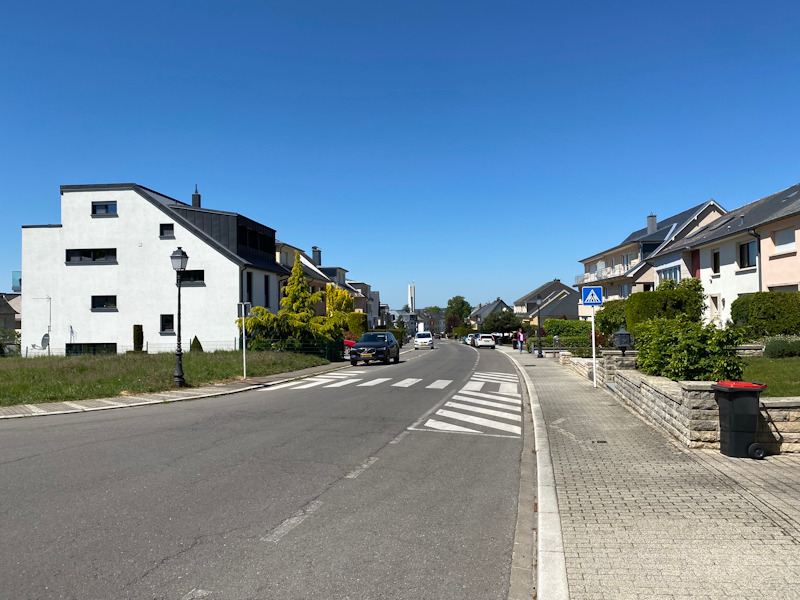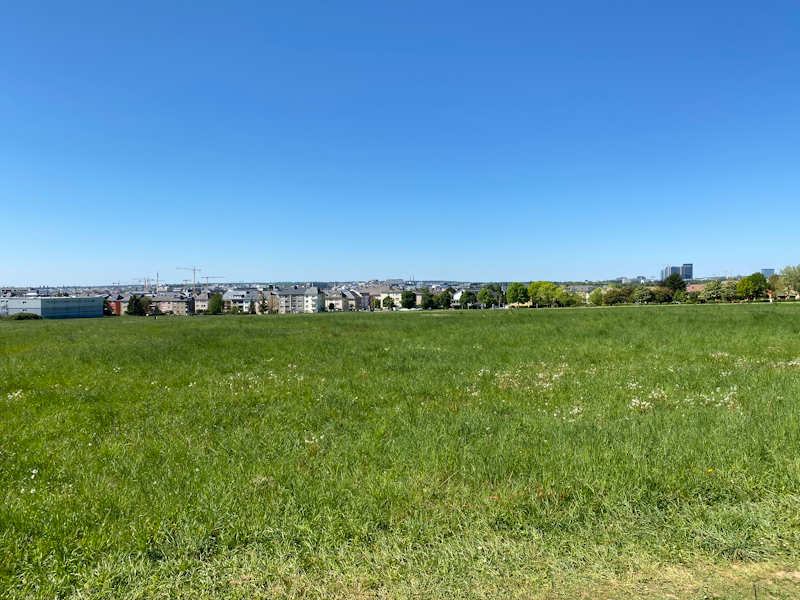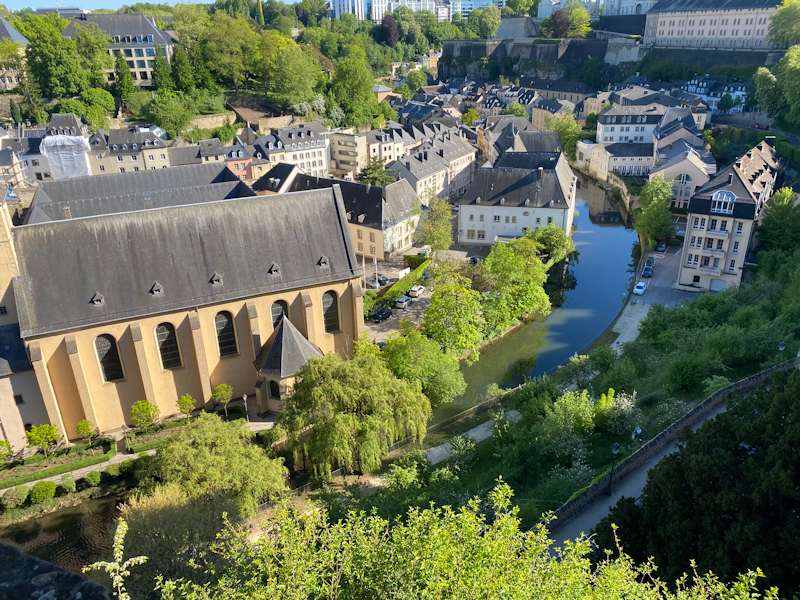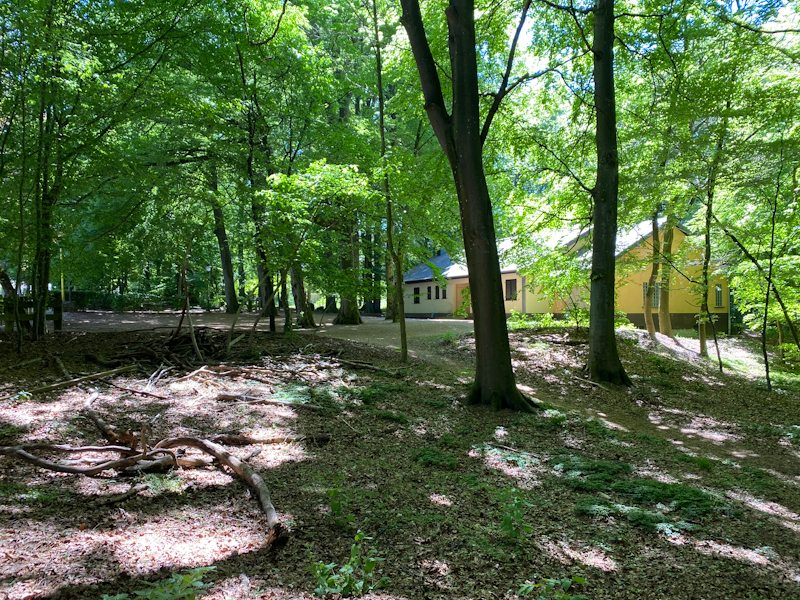Mobile Flagship Phone Camera Overview 2020 H1: Still Picture Battle
by Andrei Frumusanu on June 18, 2020 11:00 AM ESTZoom Modules: Who Sees Furthest?
Over the last year or so we’ve seen a big focus on the telephoto aspect of new smartphones, with a lot of vendors introducing new innovative modules with greater optical magnification and longer focal lengths than what we’ve seen in years prior. Again, it’s been mostly a matter of a marketing arms race that had been triggered by Huawei with their P30 series phones and the introduction of “periscope” camera modules.
In general, there’s two distinct categories of phones nowadays, those who have any fancy camera modules that are able to zoom out by a factor greater than 2x / greater focal length than around 50mm equivalent, and the more traditional phones who limit themselves to that more classic area.
On top of that, we also have to pay attention to intermediate zoom levels – these long focal length modules have also brought with them the drawback that there will be quite a big quality gap at zoom levels greater than that of the main camera, but lower than that of the telephoto module.

[ iPhone 11 Pro ][ iPhone SE ][ P4 ]
[ Galaxy S20U(S) ]
[ Galaxy S20+(E) ]
[ OnePlus 8 ]
[ OnePlus 8 Pro ]
[ V60 ]
[ Mi10 Pro ]
[ Mate 30 Pro ]
[ P40 Pro ]
[ Reno3 Pro 5G ]
[ Reno3 Pro ]
[ X-T30 ]
In the first scene, amongst the zoom capabilities themselves, we also need to pay attention to the exposure of the scene as it’s something a ton of phones get wrong. This shot was obviously in broad daylight with the sun high up with no clouds, so we’d expect brighter exposures and bright highlights to be present.
Apple does about as well as you’d expect from a 2x optical module at a 2x magnification, but it does lack a bit in terms of dynamic range and could be a bit brighter with the last 5-10% of highlights being too low. Google’s Pixel 4 does better in the exposure and still does a very good job at 2x. Both phones don’t have optics to go further than this without loss, although they’re using multi-frame interpolation to digitally zoom further up to 10x/8x.
Neither the OnePlus 8 nor the LG V60 have telephoto modules, rather relying on the native high resolution of their main sensors to crop in a longer focal length frame. Both aren’t as good as dedicated telephoto modules, but they’re passable for your everyday capture at this range. The Samsung Galaxy S20+ actually also falls part into this category of phones without telephoto modules, but rather than falling back to the main camera module it uses its secondary wide high megapixel sensor to crop in. This module is much clearer and more detailed than either the OP8 or the V60’s 2x modes as it’s not (as far as we know) a quad-Bayer/Tetracell sensor, but a real native 64MP sensor.
On the S20 Ultra, there’s a big quality gap between 2x and 4x and for whatever reason on this more recent firmware I don’t see Samsung’s image fusion anymore, where they would superimpose the smaller telephoto image frame within the larger main camera frame and try to merge them together.
OPPO’s Reno 3 Pro with the MTK chipset actually performed much better than the Qualcomm variant here with a much better exposure and good detail, and the MTK variant also achieves better 5x digital zooming.
Zooming further in at 3x the Huawei Mate 30 Pro and the OnePlus 8 Pro do well and are about on par in terms of detail but I prefer the OP8Pro’s exposure and dynamic range.
Zooming further, there’s only 3 phones that are able to compete optically at zoom levels of 4-5x, and that’s the Samsung Galaxy S20 Ultra, the Huawei P40 Pro and the Xiaomi Mi 10 Pro, and in these samples it’s the P40 Pro who is the clear winner. The most shocking thing here is that the Mi 10 Pro also outperforms the S20 Ultra in terms of sharpness, even though it produces a smaller 8MP image versus the 12MP Galaxy. That’s quite an embarrassment for Samsung as the Xiaomi is able to do this with a traditional optical lens arrangement without any of the compromises that come with a periscope lens.

[ iPhone 11 Pro ] - [ iPhone SE ] - [ P4 ]
[ Galaxy S20U(S) ]
[ Galaxy S20+(E) ]
[ OnePlus 8 ]
[ OnePlus 8 Pro ]
[ V60 ]
[ Mi 10 Pro ]
[ Mate 30 Pro ]
[ P40 Pro ]
[ Reno3 Pro 5G ]
[ Reno3 Pro ]
[ X-T30 ]
The next scene is also in broad daylight and here a few more of the phones had problems with colour temperature and exposures. Apple wasn’t amongst them as the iPhone 11 Pro produced a pleasing and very good composition, probably the best of the group. Google also did well but is just too shy with the highlights.
The Samsung phones really don't do well as the S20 Ultra underexposes by 15% on the main sensor and 30% on the telephoto camera, producing a dark flat image. The S20+ does well on the main sensor but also too flat on the secondary module.
Huawei’s Mate 30 pro somehow does better colours than the P40 Pro as the latter is too desaturated again.
Checking out the phones which are able to reach out further than 2x zoom we see again the Huawei P40 Pro lead in terms of clarity and detail on the 5x shots. The exposure isn’t fantastic though as the f/3.4 aperture of the module seemingly doesn’t let enough light in for the exposure time the phone decides on.
The Samsung S20 Ultra shot at 5x is garbage here; excessive oversharpening ruins the shot and it’s outright worse quality than even some 3x telephoto modules such as from the OnePlus 8 Pro. The Xiaomi Mi 10 Pro even beats the S20 Ultra gain.
At 10x zoom the S20 Ultra turns off this idiotic processing and actually manages to outperform the P40 Pro now; all other phones at this zoom range have to heavily rely on digital cropping so aren’t competitive with the Samsung and Huawei flagships.

[ iPhone 11 Pro ] - [ iPhone SE ] - [ P4 ]
[ Galaxy S20U(S) ]
[ Galaxy S20+(E) ]
[ OnePlus 8 ]
[ OnePlus 8 Pro ]
[ V60 ]
[ Mi 10 Pro ]
[ Mate 30 Pro ]
[ P40 Pro ]
[ Reno3 Pro 5G ]
[ Reno3 Pro ]
[ X-T30 ]
Here again the scene isn’t only just good for zooming in but also the wide-angle shot is tough on the cameras as colours are hard for the phones to reproduce nicely, particularly an issue with exposure levels and tonal handling of the highlights of the vegetation which can appear too bright and flat.
Even Apple here has problems as things are too warm and colours are shifted a bit much. Things are a bit off with all the phones but I think the OnePlus 8 Pro did the best job overall, followed by the LG V60.
At maximum useable zoom range of about 10x the fight here is again solely between the S20 Ultra, P40 Pro and the Mi 10 Pro. The Xiaomi is useable but the small sensor can’t keep up. The Samsung and Huawei are both good and have different strengths. The S20 Ultra has more sensor resolution to work with but seems a tad soft due to optics. The P40 Pro has lower resolution but has more micro-contrast.
The S20 Ultra failing in quality at 5x is again present here. I think the telephoto module here is capturing while in the binned 12MP mode and applying heavy sharpening that just doesn’t work well at all.

[ iPhone 11 Pro ] - [ iPhone SE ] - [ Pixel 4 ]
[ Galaxy S20U(S) ]
[ Galaxy S20+(E) ]
[ OnePlus 8 ] - [ OnePlus 8 Pro ]
[ V60 ] - [ Mi 10 Pro ]
[ Mate 30 Pro ] - [ P40 Pro ]
[ Reno3 Pro 5G ] - [ Reno3 Pro ]
[ X-T30 ]
Other things to consider with the phones who have a far-reaching telephoto module but have to rely on the main camera module when in the intermediary ranges is the quality of the photos in this middle range.
Huawei is the king here as the Mate 30 Pro and P40 Pro produce excellent results at 2x zoom without having an actual hardware module for this range. Both are seemingly using their main sensor at high-resolution and cropping. OnePlus and LG are also attempting this method I think but it doesn’t come out nearly as well, the latter here is just blurry but I’m not sure if that’s a low-resolution image upscaled or simply if the shot was wildly out of focus.
Samsung on the S20 Ultra doesn’t attempt anything anymore here. As I mentioned, the telephoto module superimposed middle frame that was present in the release firmware just doesn’t exist anymore here. They also don’t even use the native resolution of the camera so it’s just a blurry 2x digital upscale of the 12MP result. The S20+ should have done well here but I might have had a smudge on the lens. Generally my phone sample seems to have very weak optics on this module resulting in ghosting across high contrast edges such as seen between the tree and the rooftop.

[ iPhone 11 Pro ] - [ iPhone SE ] - [ Pixel 4 ]
[ Galaxy S20U(S) ]
[ Galaxy S20+(E) ]
[ OnePlus 8 ] - [ OnePlus 8 Pro ]
[ V60 ] - [ Mi 10 Pro ]
[ Mate 30 Pro ] - [ P40 Pro ]
[ Reno3 Pro 5G ] - [ Reno3 Pro ]
[ X-T30 ]
In this shot there’s not much additional to point out that hasn’t been said in the previous shots. One thing I like to point out to is the high-resolution shots of the various phones and sensor modules.
On the OP8Pro, P40Pro and Ren3 Pro 5G we’re seeing again this super weird demosaicing artefact on regular pattern objects such as the bridge’s white barriers. It results in this squiggly pattern that doesn’t exist in real life. The OP8Pro and Reno3Pro5G on top of that showcase some bad RGB Moiré pattern in their 48MP shots.
This behaviour seemingly doesn’t seem to be present on the phones with Samsung sensors such as the S20 Ultra, Mi 10 Pro or Reno3Pro, which might point out that it might be a Sony sensor issue. Oddly enough the OP8 doesn’t have this issue even though it’s the same sensor as on the OP8Pro UWA – which does showcase the characteristic.
I don’t know if the V60 has a Samsung or a Sony sensor but it doesn’t showcase the squiggly pattern, but it does show the RGB rainbow Moiré.
Overall Telephoto - A Matter of Consistency
Overall, there’s a ton of different methods and hardware solutions that vendors employ to reach enable large focal length cameras or large zoom factors in their phones.
Personally, what I value most is actually having a good amount of consistency across the camera’s zoom range, and it’s here that some phones just do better than others.
Going from medium level (2x / 50mm) zooms up, Apple and Google here do excellently well and are well above the rest of the pack in terms of quality of detail and exposure handling. Huawei is by far the best at the 2x range without having an actual module in this focal length thanks to its great handling of the high-resolution sensors. The S20+, V60, Mi 10 Pro and the OnePlus phones also battle it out here. Generally, amongst those the S20+ would be the best most of the time but it’s highly scene specific as the results can vary a lot depending on the setting. The S20 Ultra is clearly the worst phone at this range and just doesn’t have any tooling to solve the problem.
Going further, the 3x modules of the OnePlus 8 Pro and Mate 30 Pro are good compromises, but both of these don’t always convince in terms of colours or exposure.
The periscope and 5x optical modules are mixed. At 5x, the P40 Pro clearly wins in quality, followed by the Mi 10 Pro. The S20 Ultra has a masochistic quality of crippling itself in the processing at this range. Zooming further out at up to 10x the S20 Ultra recovers as the best performer as it turns off its weird processing.
If I weren’t to consider colours and exposure, I think Huawei’s solutions for zooming are the best as it gives the best results across the whole available focal range. I also liked Xiaomi’s solution of having two “traditional” telephoto modules at 2x and 5x magnification without having to use a more compromising periscope module. I have to wonder what the most cost-effective method is here.










130 Comments
View All Comments
StormyParis - Thursday, June 18, 2020 - link
0.01% of users shoot in RAW, so reviews that take into account the compression algorithms are way more useful to way more people.Andrei Frumusanu - Thursday, June 18, 2020 - link
I did make a set of RAW pictures with the phones but didn't get into posting them. The biggest issue with it is that essentially no phone really enables RAW capture on all the modules so it drastically limits the usability of it.I'll try to add in the shots to see if they're worth it.
BedfordTim - Friday, June 19, 2020 - link
Thanks. It will be interesting to see what the hardware can actually do. My Nokia (don't buy) gives far better RAW pictures even without any processing.Lilja - Friday, June 19, 2020 - link
Yeah, I agree this is problematic, but it's also for that same reason something that would be interesting to see evaluated and compared. Thank you for the effort regardless!Tams80 - Saturday, June 20, 2020 - link
While this is a 'technical' site and many commentators and perhaps even readers are prepared to mess with RAWs, most people just simply don't want to.And you need to bear in mind that while someone may be technically skilled in one area, it doesn't mean they are in others. In fact, being technically skilled in one area may even make them more likely to want stuff that "just works" in areas outside their expertise. They might be interested in how that "just works" works and how different implementations compare, but they don't want to do any of the fiddling themselves, as they fiddle at work as it is.
s.yu - Saturday, June 20, 2020 - link
IMO you'd have to be shooting everything with Gcam or LR because single shot DNG from <1" sensors gives you very limited PP potential. Then it would be down to the hardware, and compatibility of the (generally unofficial) software with the hardware.NICOXIS - Thursday, June 18, 2020 - link
Nice review! There so much so data lol I wish there was a summary table or some kind of rating system for easier comparison.eastcoast_pete - Thursday, June 18, 2020 - link
Thanks Andrei, good and in-depth review! As others have mentioned already, including an actual camera with good sensor and optics provides the measurement stick so often missing from smartphone camera reviews. I have one request, which I know might be only of interest for some of us: please consider a comparison review of video capabilities also. I find myself using my smartphone a lot more for video than for still images, and we know that a phone's video capability is not always predicted by its still image quality.Andrei Frumusanu - Thursday, June 18, 2020 - link
I'll have to think about the format of a video comparison, it's not as easy.eastcoast_pete - Thursday, June 18, 2020 - link
Thanks for considering it!